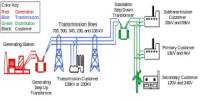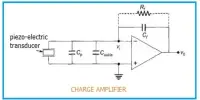Researchers from Monash University have identified a new design motif that was inspired by the stiff exterior shells of invertebrates and could be used to develop more durable building and construction materials in the future.
According to a study published in Nature Communications by Professor Wenhui Duan of the Department of Civil Engineering at Monash University, the new pattern, which joins the eight other well-established and widespread biological structural design patterns, can add a high-strength motif to cement and composite building materials that are frequently used, potentially lowering carbon emissions.
This discovery will help reduce the consumption of cement by increasing the material’s resistance to damage. The cement industry is one of the biggest contributors to carbon dioxide emissions, accounting for up to 8% of all man-made emissions of this gas globally.
One of the most widely used construction materials in the world, cement, was used by the research team to duplicate the design pattern. They used a 3D printing method along with nanotechnology, artificial intelligence, and lightweight cement composite, adopting this segmental design motif, to build it. This composite showed a superior load-bearing capability and a distinctive progressive failure pattern.
Compared to the current design motif, our segmental design motif dissipates the energy by segment rotation. The beauty of our discovered design motif is that the material can exhibit a unique periodic progressive failure behavior. It means we can contain the damage within a particular region of material, while the rest of the structure can still maintain the integrity and most (around 80%) of load-bearing capacity.
Professor Wenhui Duan
“We demonstrated the application of this design motif in producing high strength, damage tolerant lightweight cement material. In addition, this design motif can also be applied to various materials such as ceramic, glass, polymeric, and metallic materials for advanced materials design, energy storage/conversion, and architectural structures, in collaboration with the teams from the University of Queensland and the University of Manchester,” says Professor Duan.
There has been a movement to extract design motifs from more than 7 million living species worldwide since the 1972 discovery of the helical structure, one of the most prevalent structural patterns in life, to assist in the manufacturing of structured/structural materials.
Only eight categories of design motifs have ever been retrieved and used in materials design, despite nearly 50 years of research showing significant repeats in the majority of species classes.
The unique design structure has been found in a variety of taxa, including arthropod exoskeletons, mammal legs, amphibian legs, and reptile legs. These design patterns serve as useful inspiration for contemporary material design and facilitate the production of structural materials.
“Compared to the current design motif, our segmental design motif dissipates the energy by segment rotation. The beauty of our discovered design motif is that the material can exhibit a unique periodic progressive failure behavior. It means we can contain the damage within a particular region of material, while the rest of the structure can still maintain the integrity and most (around 80%) of load-bearing capacity,” says Professor Duan.
















